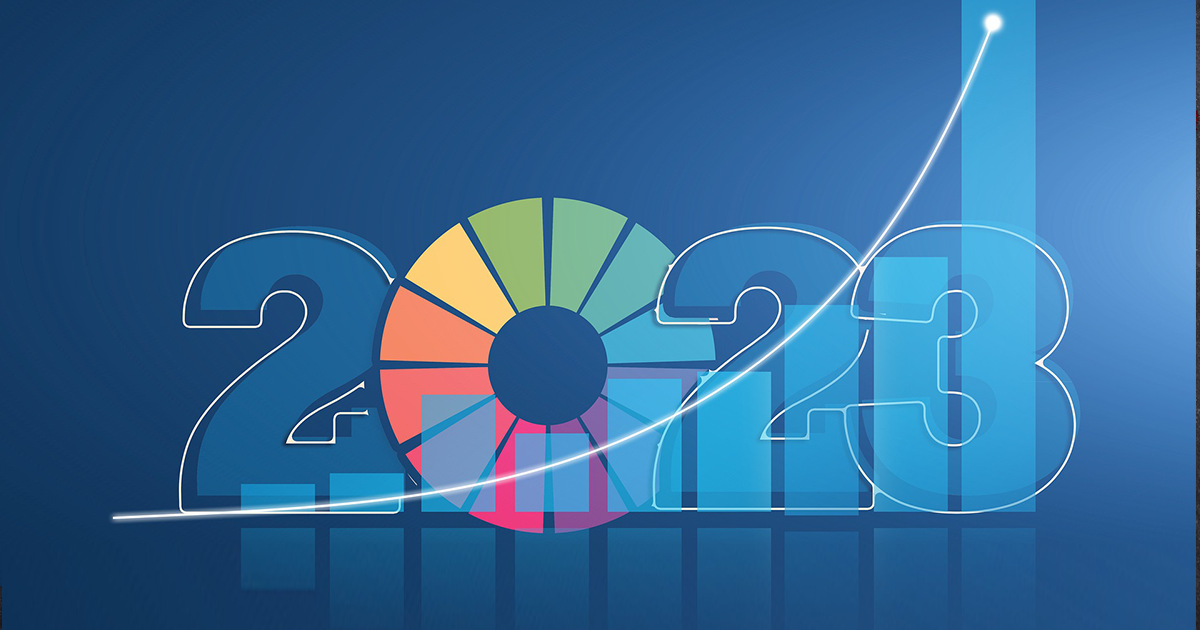In the spirit of the new year, here is a list of Internet evolution, disruption, and technology developments that the Pulse team will be keeping a keen eye on in 2023.
Internet Shutdowns to Increase to Pre-COVID Levels
In 2022, Internet shutdowns in Russia and Iran drew (and continue to draw) plenty of attention. The negative impact of these large-scale shutdowns on a country’s Internet connectivity and economy is relatively easy to measure.
Read: Measuring the Impact of Internet Shutdowns Using Real-Time Data
However, there are a growing number of smaller, more regional shutdowns, which are less so. This is something that we as a research community are still working towards refining but we expect governments to continue to use shutdowns to dampen civil unrest, especially as stay-at-home and other social distancing strategies during the COVID-19 pandemic have reduced the ability to hold in-person protests over the last three years.
We will also closely follow the global and local legislation and policy responses to these and other shutdowns as per recent examples, including the UN resolution on shutdowns and a Calcutta court suspending a local shutdown during exams.
Africa to Continue to Increase its Resilience
If the last three years have taught us anything about the Internet, it’s that it is an extraordinarily resilient network. With most of the world having to work and learn from home during this time, our reliance on and use of the Internet has never been greater. Thankfully, the network has been able to cope with the significant increase in traffic. However, there’s always room for improvement, particularly among countries with low Internet penetration and limited infrastructure.
Since 2021, we have been actively measuring the capabilities of African countries to always provide a stable and reliable means of Internet connectivity. Currently, 88% of African countries have a resilience score of less than 50%. However, since we’ve been measuring, we’ve seen an increase in the number of active exit points on the African continent from 442 to 458, indicating an increase in the number of alternative routes within African countries. The number of active IXPs also increased from 47 to 51, which means more traffic is being exchanged locally.
Learn how IXPs make the Internet faster and more affordable.
Even though there are signs of a global recession on the horizon, we expect to see these numbers increase further in these countries and others, and hopefully an uptick in local infrastructure to take advantage of the PEACE Cable, Africa-1, 2Africa, Equiano, and SeaMeWe-6 submarine cables that will add extra redundancy and, in some cases, lower latency to all coastal countries. So far, we’ve observed a 4% increase in the number of international gateways, most of them attributed to the new cables landing on the shores of Africa.
The Internet and Your Data Will Become Even More Concentrated
In 2022, we re-examined our efforts to understand Internet centralization to focus on the potential for control by large international service providers and its effect on Internet resilience, market concentration, and dependence on other countries.
Since 2021, there has been a gradual decline in the United States’ market share (Figure 1, blue) in terms of data centers, DNS servers, hosting, and server locations. Much of this can presumably be traced to Europe’s General Data Protection Regulation (GDPR) and other recent regional and country data protection regulations, which have required data and certain infrastructure to be stored and/or controlled in the country.
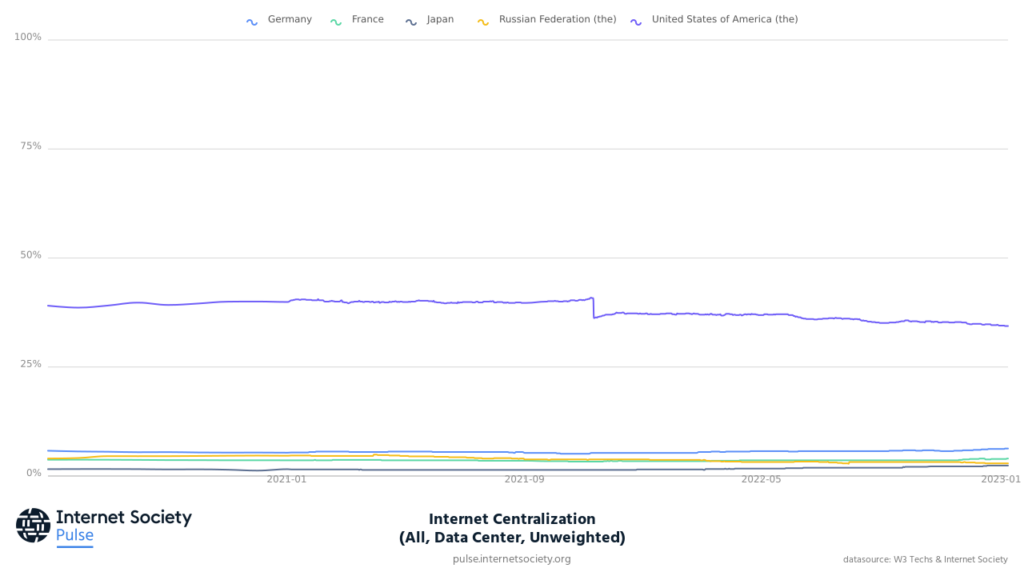
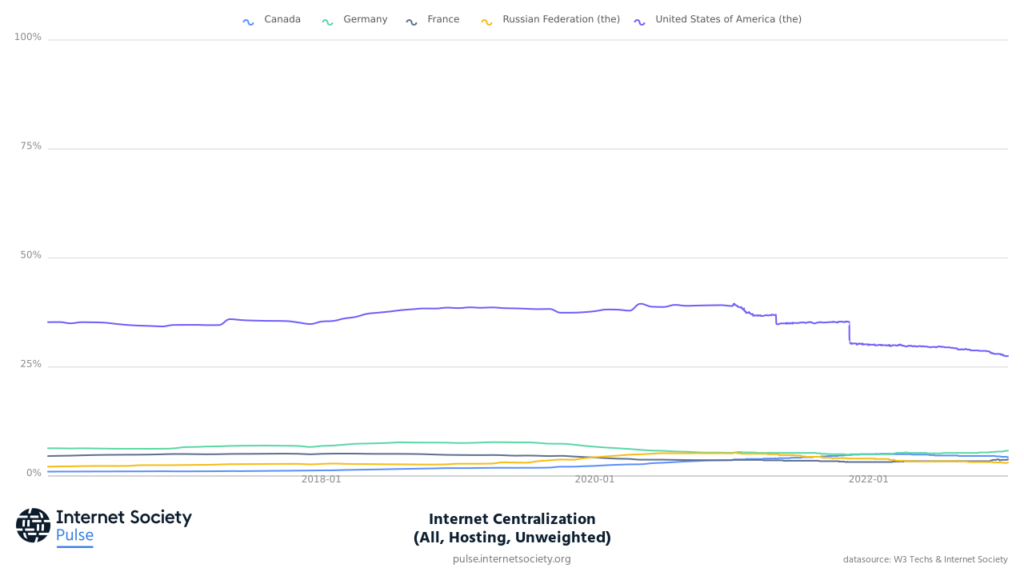
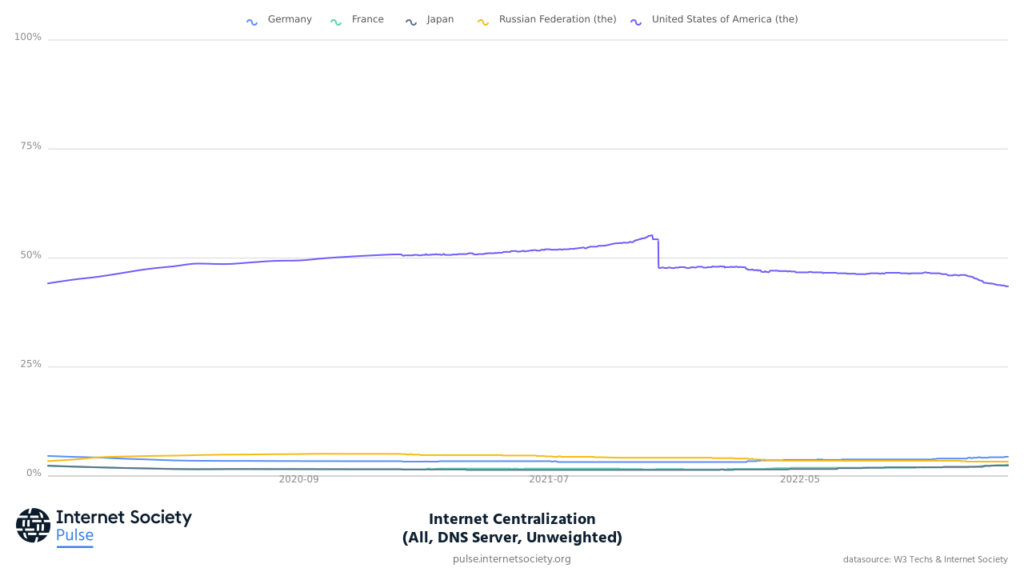
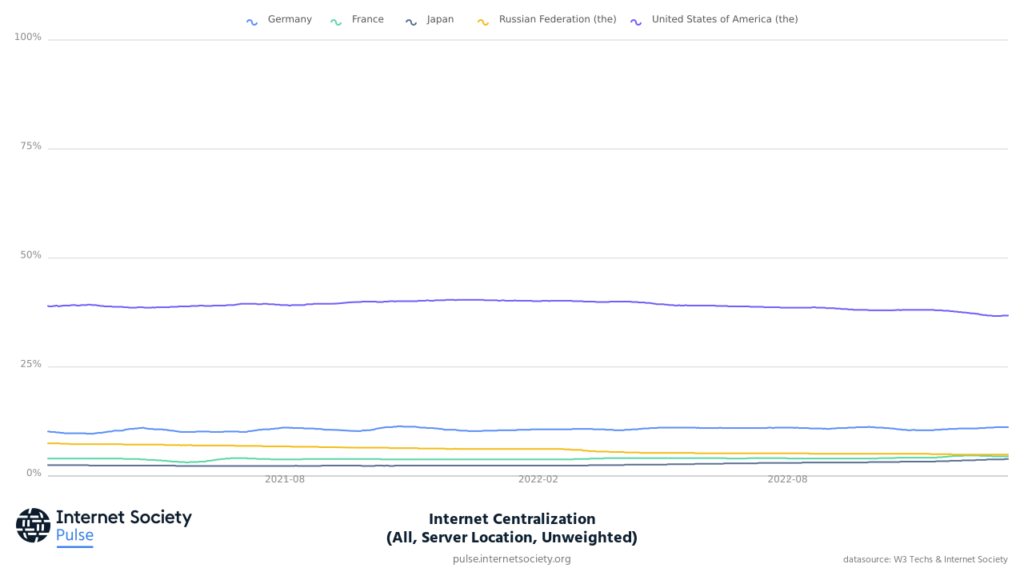
Figure 1 — (Top to bottom) The percentage of data centers, hosting, DNS servers, and server locations for all sites hosted by the top five countries.
However, when looking at the Top 1,000 websites (Figure 2), all these indicators have increased within the United States (blue) and decreased in China (green) in the last three months, also most likely due to ongoing data protection regulations playing out between the two countries.
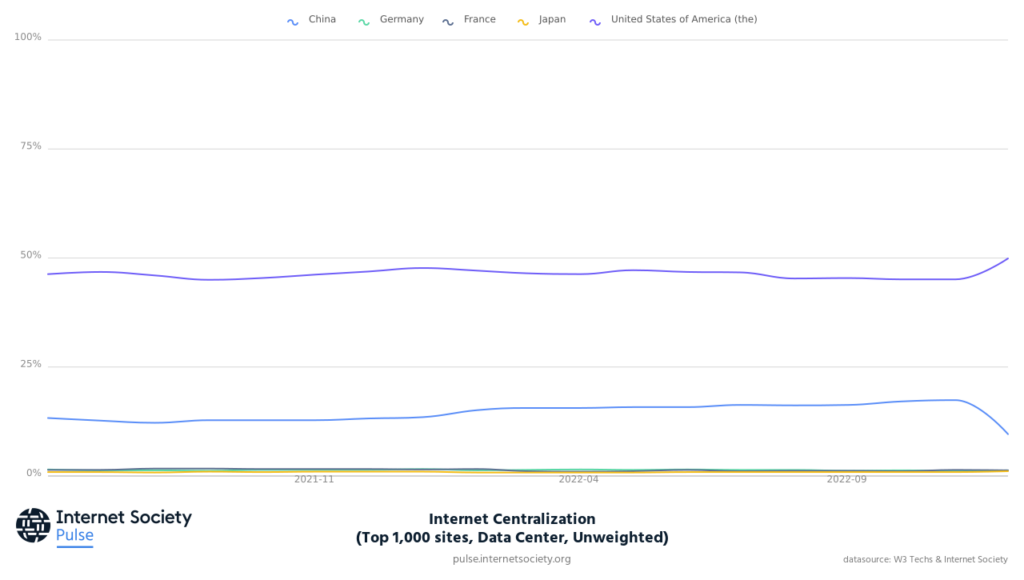
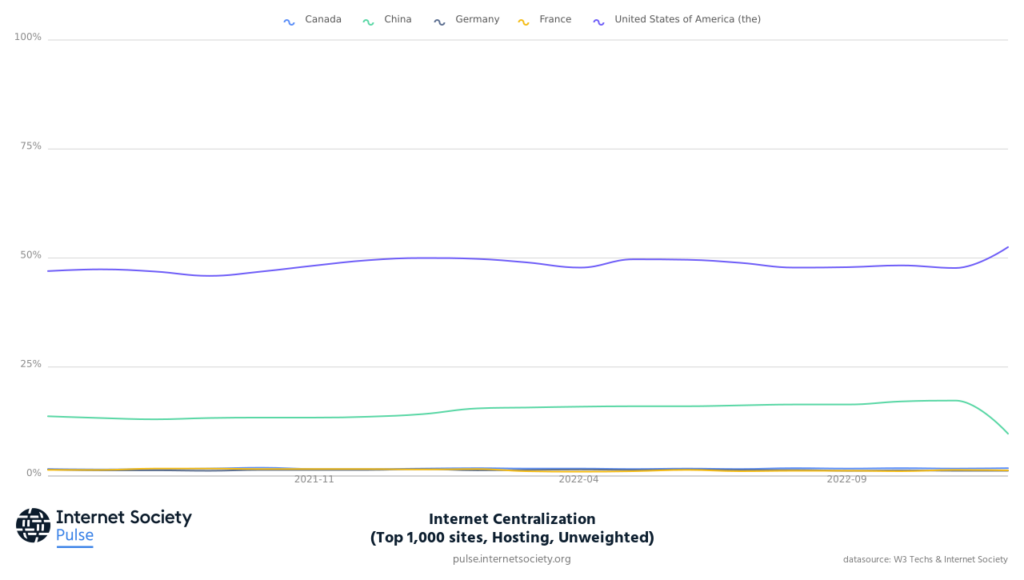
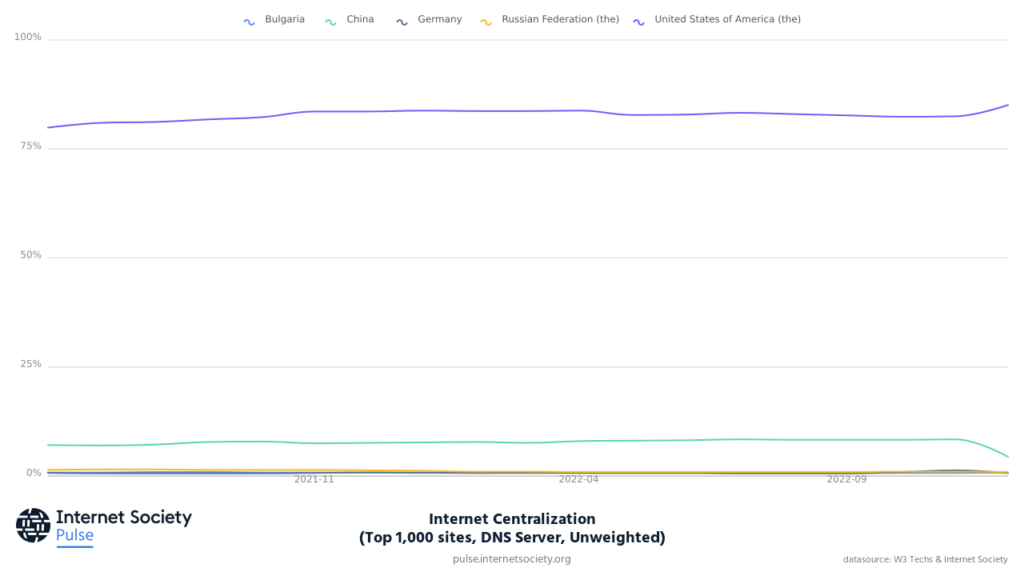
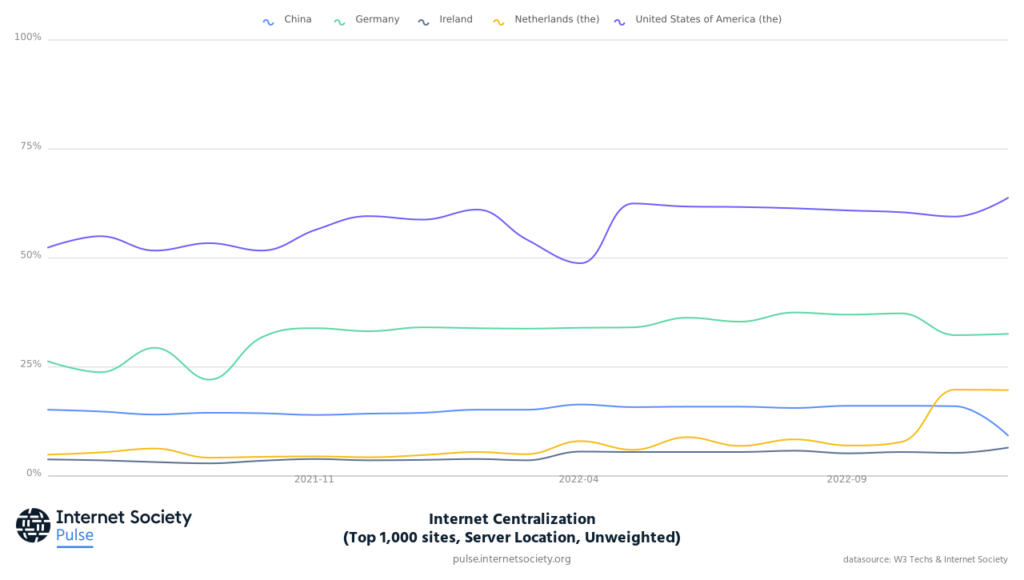
Figure 2 — Top to bottom: The percentage of data centers, hosting, DNS servers, and server locations for the top 1,000 sites hosted by the top five countries.
The Internet Will Continue to Evolve Without Most of us Knowing
While artificial intelligence applications such as ChatGPT and DALL·E 2 have captured our imagination over the last three months, these are not the technologies that will improve Internet scalability, security, trust, and availability of the Internet. Such core technologies (DNS, HTTP, TCP/IP) continue to evolve or become superseded without most Internet users knowing.
In 2023, we expect to see more devices, networks, and sites supporting IPv6 (Figure 3) to help connect the billions of new devices that will be connected to the Internet in the coming 12 months.
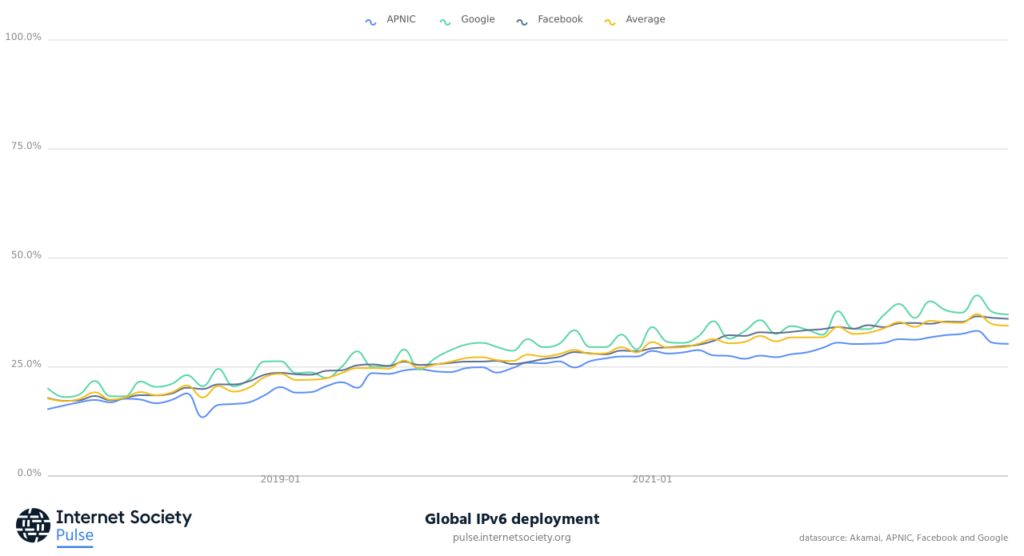
Read: IPv6 Deployment Passes Another Milestone
We’re also interested in seeing the rise of HTTP/3 (QUIC) (Figure 4), the latest version of Hypertext Transfer Protocol that offers improved performance and security.
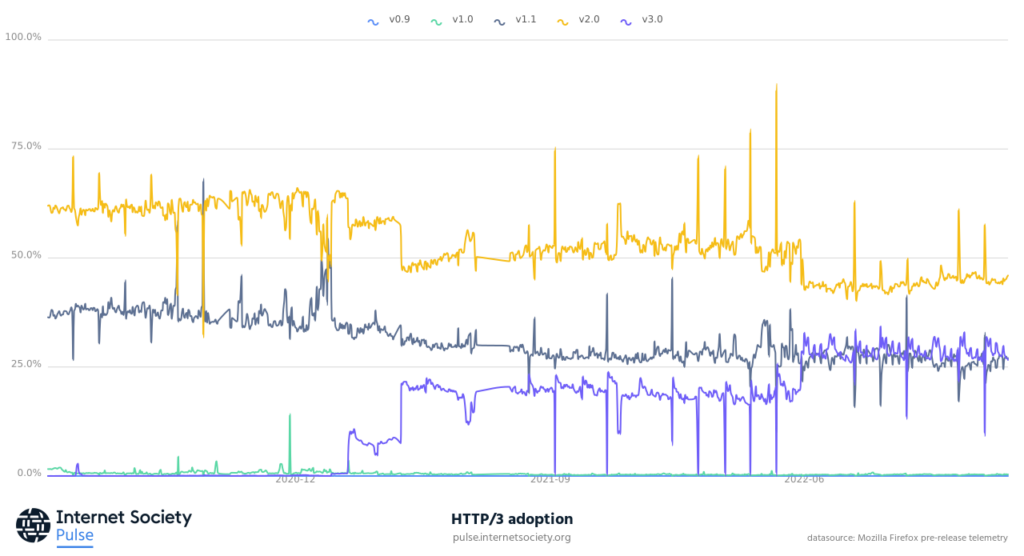
Regarding security, we expect and will promote the increased use of several security measures including:
- The latest version of Transport Layer Security (TLS 1.3)
- The validation of DNS Security Extensions (DNSSEC)
- Routing security measures, including network operators generating Route Origination Authorizations (ROAs) for the routes they announce to the Internet, and validating routes that they receive. Learn more about routing security.
Subscribe to the Pulse monthly newsletter to follow how our predictions play out.

